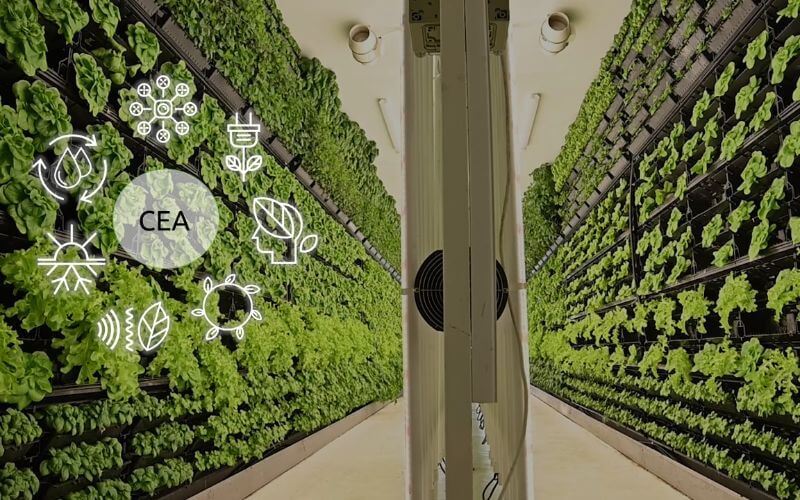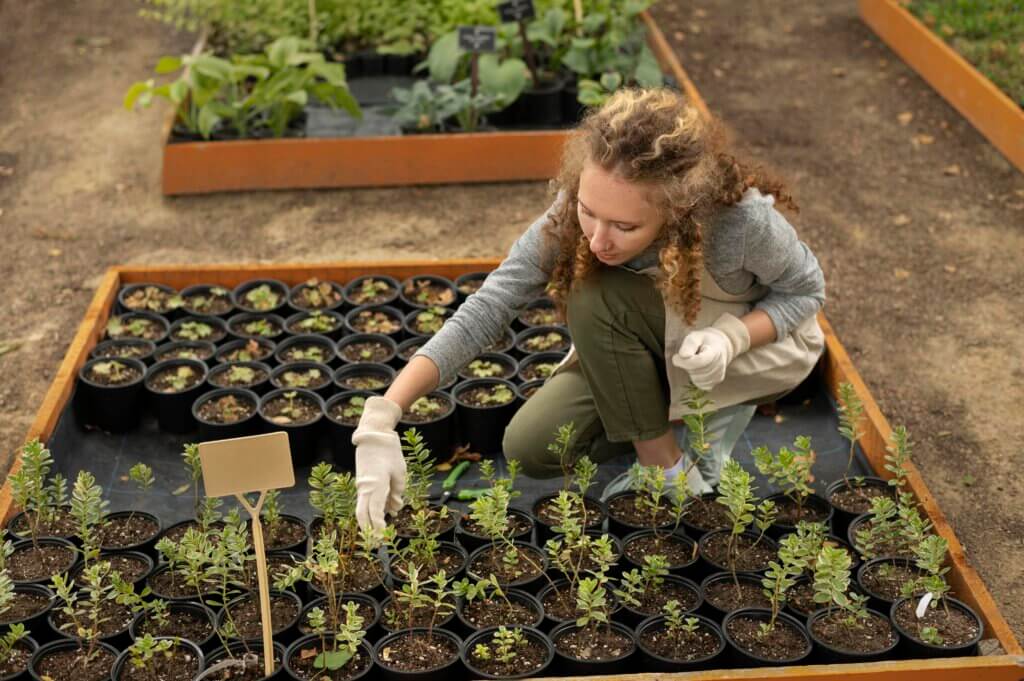Controlled-Environment Agriculture
Advances in CEA are redefining the field of agriculture technology and enhancing opportunities for vertical farming systems throughout the world.

As the demand for food production increases throughout the world, the field of agriculture technology (also known as agtech) must seek new and innovative ways to enhance food security.
Controlled-Environment Agriculture (CEA) is a budding field within the agtech industry whereby crop grow in an optimized environment using controlled and monitored inputs.
CEA is most often used in conjunction with indoor farming methods such as vertical farming and semi-indoor settings, such as greenhouses. However, components of CEA can also be integrated with protected cropping systems, which have some controlled elements and some elements that rely on external conditions.
Controlled-environment agriculture therefore provides the same crucial inputs that conventional farming does- only in a more measured, calculated, and controlled way, which increases the reliability, consistency, and productivity of yields.
Controlled-Environment Agriculture Systems
With controlled-environment agriculture systems one can control variables such as: lighting (light spectrum and intensity), temperature, humidity, Co2 concentration, airflow, irrigation rate, and fertilizer composition and distribution.
These components vary slightly depending on what type of farming method is being used. The most common vertical farming method used in integration with controlled-environment agriculture is hydroponic farming, whereby produce is grown inside of a water-based system. Aeroponics, whereby produce is grown with the help of mist, has also been steadily growing over the past several years. While less common, geoponic farming- which is soil-based (such as Vertical Field or greenhouses) can also be integrated with controlled-environment agriculture technology.
Vertical farm software, such as sensors, monitors, and other data information systems are an important component of controlled-environment agriculture technology, as they enable vertical farm companies to analyze their effectivity, minimize energy and waste, and increase yields.
Data-based software report to farmers in real-time regarding what inputs are being allocated to plants, thereby helping farmers decrease costs and increase productivity.
Why is Controlled Environment Agriculture Important?
CEA enhances the reliability and efficiency of agriculture. By growing produce indoors, CEA reduces seasonality constraints, enabling crops to grow year-round. CEA reduces risks exacerbated by global crises such as the climate crisis and pandemics, since produce can be grown almost anywhere in the world, at any time. Furthermore, as climate change intensifies hurricanes, floods, wildfires, and other extreme weather events, outdoor farmers are increasingly at risk for losing entire yields.
CEA technology therefore offers a reliable and local method of food production that can increase food security. Furthermore, because indoor farming has less risk of pests and weeds, CEA produce is usually free of chemical pesticides and herbicides.
Another benefit of CEA and vertical farming is land-use. As vertical farming systems stack produce one on top of the other- very little land is used, and therefore produce can grow in urban locations and in other places where land is precious and expensive- such as near biologically diverse hotspots, which are typically deforested for the sake of agriculture. Water use is also greatly reduced with CEA because of precisely controlled drip irrigation systems, minimized evaporation, and the recycling of water through the vertical system.
Who is Using Controlled-Environment Agriculture?
Currently CEA is used in two primary markets. One is the vertical farming market, which commonly grow leafy greens and herbs; however, as technologies expand the product variety is expanding rapidly as well (into more specialty crops such as strawberries, mushrooms, and tomatoes). The second market is pharmaceutical companies, particularly in the cannabis industry. This is because cannabis needs extremely precise inputs, which can be measured, allocated, and analyzed easily with the use of CEA technologies.
The CEA market is expanding significantly in both segments and into new fields, as new industries see the benefits of a controlled environment.
Furthermore, controlled-environment agriculture companies are growing as well and increasing their product offering. Whereas, full “turn-key” systems were once offered, now, vertical farming companies can order select CEA components from a range of manufacturers. This helps farming companies select components that fit their solutions best while also increasing competition, reducing prices, and enhancing the overall accessibility of this unique and game-changing innovation.
CEA is redefining the fresh produce market, the local produce market, and the urban food movement. Many are even touting it the future of food- and as companies expand the products offered- our supermarket shelves are bound to be stocked with this modern agtech offer shortly.
FAQ
Controlled-Environment Agriculture is a method by which food is produced under controlled settings, often in an enclosed indoor environment, such as a warehouse or shipping container. Agricultural inputs are allocated in a controlled way, creating an optimized environment for crops to grow consistently and efficiently throughout the year.
Produce and cannibus are most often grown inside of a controlled-environment. Inputs such as irrigation, fertilization, lighting, and climate-control are integrated with the indoor farm providing the plants with all the resources they need to grow optimally.
CEA helps to grow a steady and consistent supply of produce throughout the year. Whereas outdoor farmers face lots of risks because they are dependent on unreliable weather conditions, CEA controls the inputs making sure the plants have all the conditions that they need to grow to maturity- without any of the risks of volatile weather.



